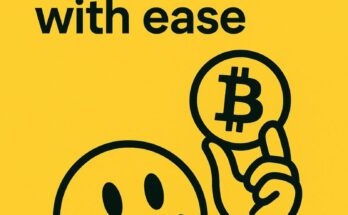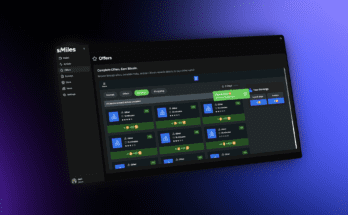What Is Hic Et Nunc?
Many folks are starting to hear more and more about NFTs these days. TBH, it may sound like a craze when you hear about things that make you SMH such as digital art and collectibles selling for massive sums of money. The NFT craze is building on the trail set forth by things like Bitcoin and Tezos.
Hic Et Nunc means “here and now” in Latin.
The platform was initially intended to hit the e-sports community specifically giving them ways to crowdfund and crowdsource initiatives. It has since evolved into NFTs being the first major use case to take off.
Now, Hic Et Nunc has a full fledged marketplace for NFTs where users can buy and sell NFTs and mint them for as little as just a few pennies. Creators can also add royalties to their NFTs so they can get paid when the NFTs are resold again and again on the secondary market.
In September of 2021, a traditional museum actually minted an NFT for one of their pieces. The Whitworth Museum in Manchester minted an NFT of The Ancient of Days.
Here is an interview with the founder courtesy of xtz.news –
The Interview With Rafael Lima:
Why the name Hicetnunc?
That’s a concept that I’ve found possibly in a Deleuze (Gilles), or a Paul Virilio reading? I’m not sure. It concerns an existential praxis, a structure in perceiving references and making decisions upon them.
How did you come to be working on a Tezos project?
I’m a person very akin to decentralized philosophies. As I had interacted with a computational logic lab which researches formal verification methods. I had the opportunity to take part on B9Labs smart contract development course for Tezos. As I interacted with Tezos community during 2020 it was possible to nourish such decentralized philosophies along the development of dApp and smart contracts architectures.
What gave you the inspiration to create this project?
The initial idea was to have a decentralized crowdfunding protocol on blockchain, allowing users to exchange goods on chain. We intend to bring open source infrastructure for multiple devices, intending to contribute with a diverse set of communities, as well industries, governments and institutions. Our latest protocol version makes use of FA2 multi-asset smart contract standard (ERC-1155 inspired), providing a sustainable architecture.
From that HicetnuncDAO was born. It aims to bring decentralized monetization processes for media content producers, e-gaming platforms, software industries and potentially others.
hicetnunc.xyz is a platform where such systems can come to life making assets management more accessible. Experimentations on decentralized monetization systems as dApps, e-gaming, crypto art, NFTs stores along with other medias are on a path that we had in mind while bringing together this infra.
We intended to consider many stakeholders interests while bringing a generic architecture to life, so tokenization processes could be designed by one’s need. Tokens can represent ‘real’ and virtual realities.
If you were to describe this project to be similar to an existing project on a different platform (i.e. Ethereum) which project would it be closest to? I.e. MolochDAO?
Gitcoin could be a platform which inspired us. If I had to intervene, I would try to be radical. Redesigning multiple social media monetization strategies and institutional systems.
We intend to present it as a public blockchain infrastructure, and we are looking into taking it to full decentralization, making it persist beyond even my own will.
Different Smart Contracts can be composed along HicetnuncDAO features. This could allow the management of different sorts of tokens.
This decentralized application is focused in pursuing blockchain values, such as censorship resistance and open access to information.
What kind of DAOs presently on Ethereum would be able to use Hicetnunc?
Cross-chain interoperability is a research topic which our lab is also researching on. If someone is interested one can visit our Github repository at https://github.com/hicetnunc2000 . Some of our recent projects assists web3 architectures, such as ungrund oracle and randombridge, which are metatransaction off-chain workers and chainlink external adapters, respectively.
Hicetnunc is a micro-funding project, but could this be used to create other kinds of DAOs too which don’t involve micro-funding?
Hicetnunc protocol have a generic architecture. The concept of a DAO can be extended to different use cases. We intend to provide a set of smart contracts, which would allow DAO administrators to customize them if needed.
We intend to support extensions that would allow DAO administrators to vote for projects proposals looking for funds, or conditioning funds distribution due the achievement of milestones.
Are there any reasons why Tezos is suitable for this type of project in comparison to other blockchains?
One of the things that drove me to Tezos was my interest in Ocaml, while also being open for experimentations related to STOs, DeFi, e-gaming, VR… it’s a networking opportunity between different patchworks.
Is there a user-interface being created for this project to make the creation of micro-funding projects easy?
Yes. We’re writing an user interface on ReactJS and thinking in possibly experiment with it along mobiles. It’s beta uses AirGap and/or Thanos Wallet to interact with smart contracts (TZIP10). We are dealing with digital assets, such representations are generic by it’s nature, which means there are many possible ways of using such setups in real life situations, as in events, musica festivals, etc.
Do you see the Hicetnunc project potentially contributing to a Tezos treasury? Do you think this idea could be in the form of a DAO within Hicetnunc? Or for the Tezos community rewards program being managed by Tezos TQ and Tezos Commons?
This is a public infrastructure. Whichever person is free to interact with it to achieve its needs. I would love to see such labs interacting with the application, they indirectly inspired it.
Do you see this project potentially making use of the new Tezos idea of Tezos tickets?
There might be a diversity of smart contracts designs coming from it. I believe that Tezos governance and techinical development is closely related, which means that decentralized communities around the ecosystem form a new social mode of organization.
Will anyone be able to create a DAO or will you need programming knowledge?
You’ll be able to create your DAO interacting with our UI/developer tools, or even directly with the Tezos Blockchain, as there would be no third parties in the way. You’ll need to pay the costs of the operation. We don’t change fees besides the ones established by Tezos Consensus.
What were the impacts on costs to launch a DAO after Delphi?
Our costs were reduced by a factor of 4, which means a HicetnuncDAO can be published for 0.5xtz.
What was the reasoning behind the 45 days’ time frame for moving funds?
Tezos is a LPoS Blockchain. The health of the chain is managed by bakers. They offer public services for staking, as well validating transactions. We wanted to direct a time-lock on our smart contracts which would respect baking cycles. I believe it’s a common practice in financial systems. We intend to implement an initial 38 days time-lock as an experiment for retaining staked value into the chain. Quantitative analysis and projections about such features are yet to be completely disclosed.
Can you imagine bakers making use of Hicetnunc to create their own DAOs etc? There is also the DAO Baker Project, would this project allow bakers to create their own DAOs in a similar vein? i.e. make future baking rewards into an asset?
Additional features are being thought along the smart contract design. They could be achieved updating the DAO administration and drawing new rules from it. I believe that for innovating smart contracts designs it’s important also to experiment with different actors and tooling of the network. We’re open for collaboration with bakers and other projects as we follow a quite pedagogical and open source route. It’s important though to see bakers supporting smart contracts and dApp development.
Will you be having preferred bakers for the baking aspect? Or will users be able to select any baker?
We are thinking on setting an Oracle which would randomly set a baker if a user doesn’t address one. But I tend to respect each DAO management decision, where they will be able to lock such Oracle intervention.
Will users who create DAOs be able to list their own Hicetnunc (Token ID’s) as tokens on the Dexter exchange if liquidity pools are created for them?
I’m not sure about Dexter listing rules, but we intend to support efforts to enable one to exchange assets in a decentralized way. We have also some decentralized protocol experiments unfolding as we talk. Tokens generated by this automated architecture can be transferred or allowances can be given, which enables interactions with other dApps and smart contracts logics. It depends also on the adoption of FA2 standard by block explorers and wallets.
Will the smart contracts be audited before publishing?
I’m working the best way I can to give consistency to it and making this process public to get feedback. We are open to it though, as well as working on its complete documentation.
Are there any plans for the project’s smart contracts to be formally verified?
We develop many different smart contracts and we are experimenting with formal verification tools our selfs, such as with Mi-Cho-Coq.
Could you briefly describe the ‘Ungrund’ oracle and that interacts with Hicetnunc? What is the ‘Ungrund’ oracles’ role in the micro-funding process i.e. what kind of data is it meant to retrieve from smart contracts?
Ungrund is an infrastructural experiment. It makes use of the pytezos SDK, as well as the better-call.dev API, forging meta-transactions for Hicetnunc and retrieving data from the blockchain. Such transactions are then addressed to users to be signed. It also provides connectivity with IPFS to inject and edit metadata from DAOs, such as title, description, link trees. It’s an extensive infrastructure though, having modules which interacts with FA1.2 and FA2 standards. For example, if a HicetnuncDAO token needs to be transferred it can use Ungrund meta-transactions for such.
Besides the Tezos Foundation grant in cohort 4, have you had any other help financially or through teams with the project?
The support from Tezos Foundation was essential for us to experiment with this project. Currently we are interacting with open call for projects making use of Tezos to spread blockchain experimentation. We believe in a cooperative ecosystem, where we can contribute to scientific knowledge, economy and society.
Do you foresee this project as eventually being able to be integrated into the core protocol like the Tickets smart contract?
We are having some comparative studies on blockchains layer 1/2’s and on the available interconnectivity landscape. We’re studying strategies of intervening with protocol contributions after some evaluation. They concern signatures verifications and networking themes. Protocol changes, as well as its actual states, definitely intertwine on smart contracts designs.
Does the overall smart contract for Hicetnunc contain any governance features/do you foresee any overall potential Hicetnunc token? Do you think it’s possible for these micro-funding DAOs’ to have their own consensus to manage governance within their DAO i.e. holographic consensus of DAOStack?
Thank you for those references. This project actually presents many similarities to DAOStack, at least by looking at it superficially. Governance tokens could be derived from HicetnuncDAO smart contract architecture by similar means mentioned before. Smart Contracts extensions could be aggregated into the ‘stack’ updating the DAO administration or interacting with the FA2 tokens which correspond to such DAO. Our laboratory intend to drive smart contract development around HicetnuncDAO. We foresee liquidity pools for Ungrund cross-chain experimentations, as well as governance around Hicetnunc concerning our research/implementation paths.
You mentioned some use cases here:
- events can use such a system to collect funds and verify ticket
- live streamers/artists can generate DAOs and establish rewards
- tourism agents can use such a system to book visits
- funding for projects and governance experiments
- other credit or token logics
- potentially marketplaces to support a DAO
Which one do you think will be most popular, or do you know of any more use-cases?
As the UI is designed, I foresee it being used for projects which wish to gather funds and share related media/link trees. I believe that this is a great feature to have on blockchain and extremely censorship resistant. We also would love to see it being used for events, it might be a useful tool post COVID19.
What existing Tezos tools do you see collaboration with?
We’d like to aggregate and support existing Tezos Tools as AirGap, for mobile connectivity, Thanos Wallet for Browser Connectivity and Magic for e-mail authentication, mostly related to User Experience. We’d like also to interact with Spruce System and Tezos Domain to address identity features, we as well plan to keep interacting with smart contract developers from the ecosystem, e.g. SmartPy community, Cryptonomic and TQ Tezos.
Would you like to mention anything else important?
We are activelly thinking of ways to innovate smart contract architectures and we are looking into giving some workshops and talks about public voting. The support of the crypto ecosystem is essential for us. We hope to build discussions around innovation and blockchain so it becomes a public matter.


